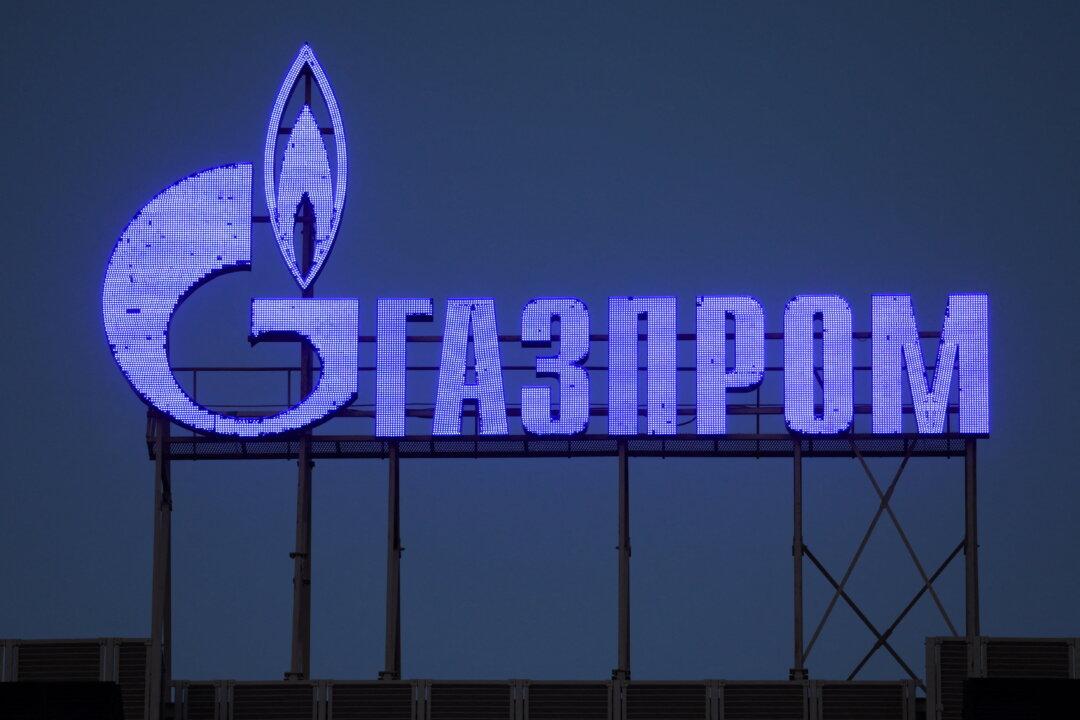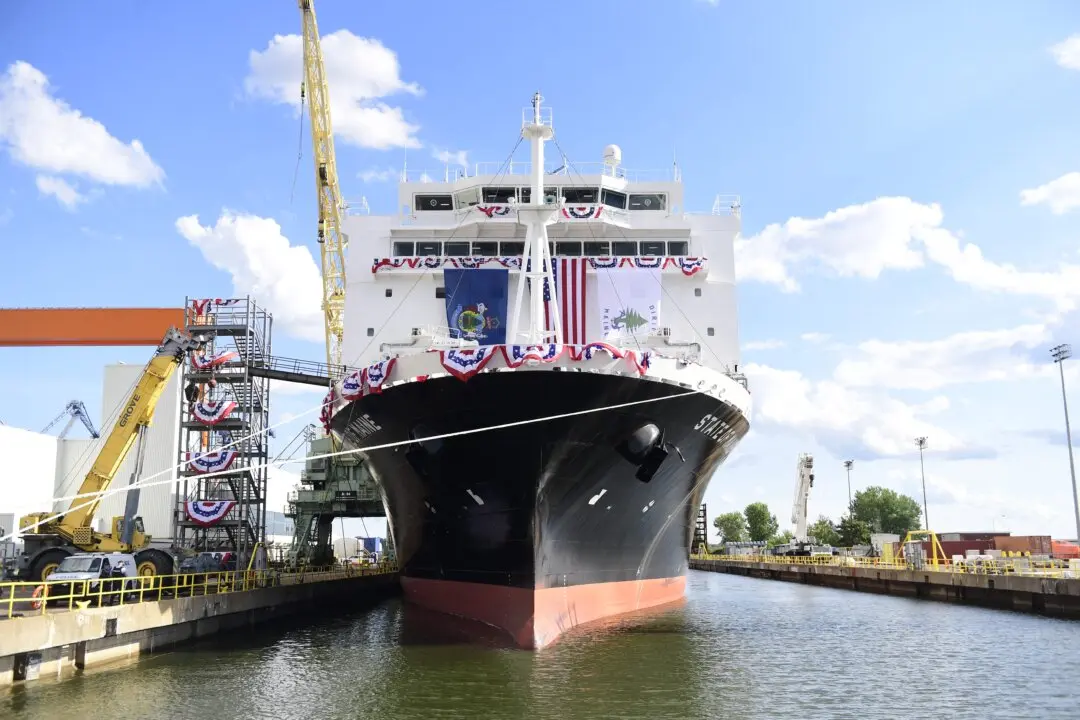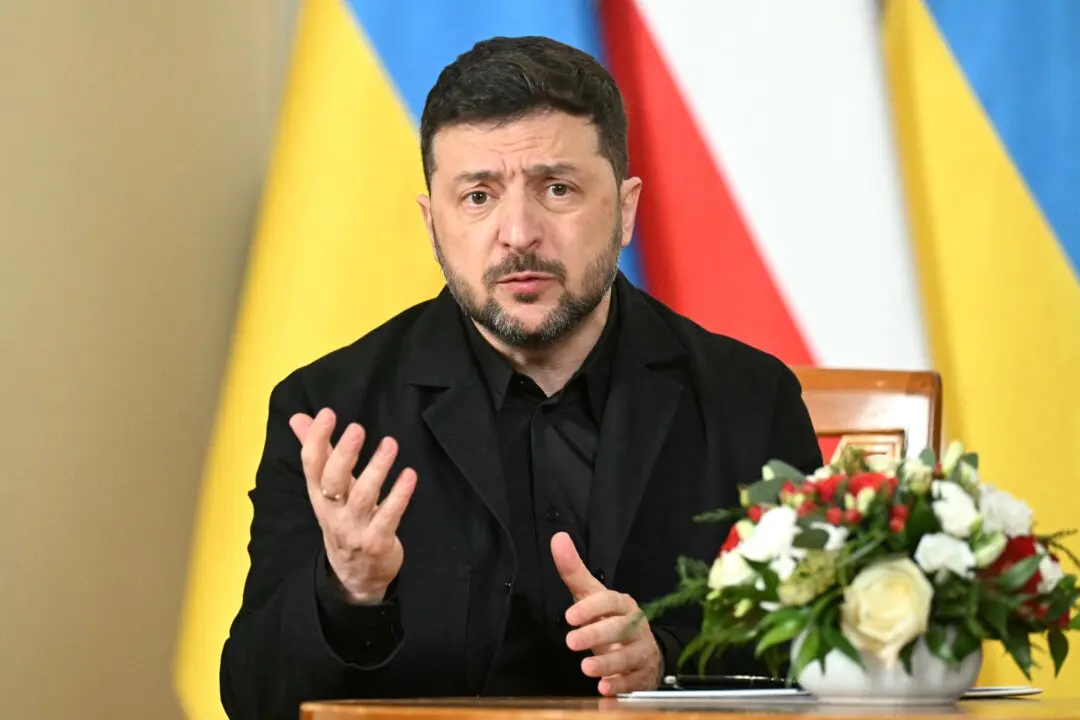LONDON—Russian gas flowed into Europe on Friday, while European gas prices continued to rise, as firms grappled with President Vladimir Putin’s threat to cut off supplies unless they paid in roubles.
Two of the three main pipelines for Russian gas into Europe, Nord Stream 1 across the Baltic Sea and into Slovakia over Ukraine were flowing normally, while flows through the Yamal-Europe pipeline over Belarus had reversed direction.





